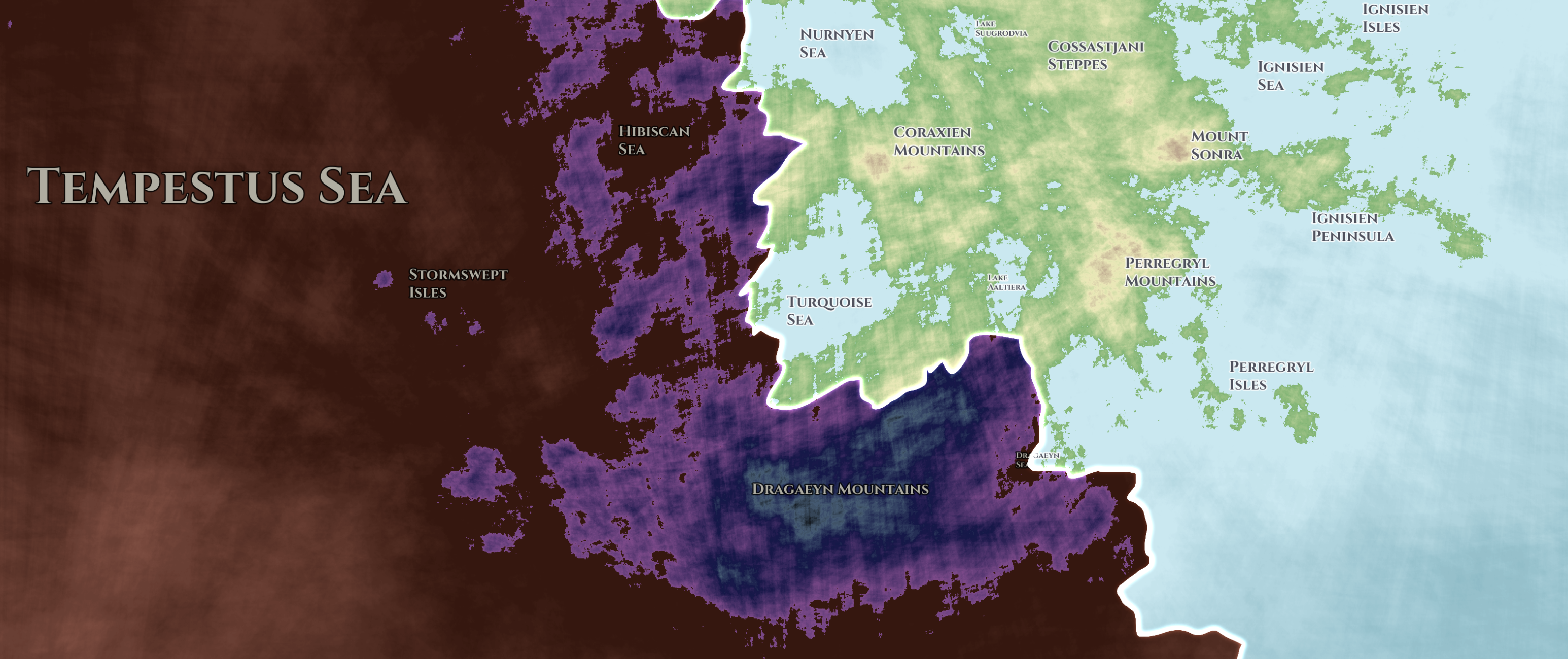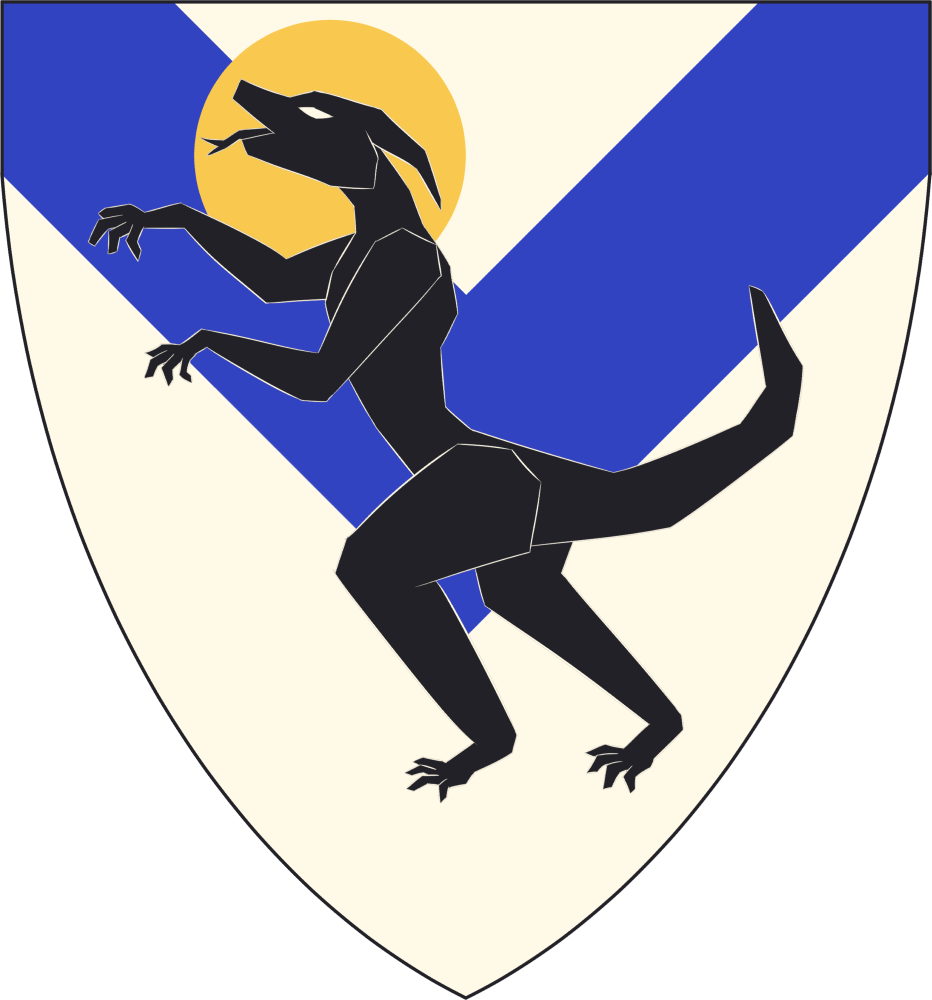Dragaeyn Lizard
What were once Gods, now reduced to bone. The fearsome Dragaeyn stalk the world no more.Dragaeyn were large bipedal predatory lizards that walked the earth alongside man in the distant Era of Legend. They inhabited the warm lands of southern Eynoria, and were worshiped as gods by the tribal humans that often fell prey to them. Now extinct in Eynoria, their bones can still be found high in the Dragaeyn Mountains, and they live on in art and heraldry,
Basic Information
Anatomy
Dragaeyn were bipedal, with short arm-like forelimbs and a long counterbalancing tail with a large plume of feathers at it's tip. A short sail-like structure ran down the length of the spine, supported by short bony "spines" with rounded tips. They had large forward facing eyes, and a mouth full of large, sharp, inward pointing teeth, They possessed talons on their feet, with an especially large, almost hook shaped claw on the inside digit of both feet. They possessed a similar, smaller arrangement of claws on their forelimbs.
Genetics and Reproduction
Dragaeyn reproduced seasonally, with courtship and mating occurring in late winter. Courtship began after they moulted their small, drab coloured feathers in mid-winter in favour of larger, more brightly colourful feathers in shades of reds, blues, yellows and white. Patterns were unique to each individual, and the extremely rare surviving Dragaeyn courtship feathers are in high demand today.
Eggs were laid in mid-spring and hatched roughly 80 days later in mid-summer. These eggs were small compared to the Dragaeyn's adult body size, roughly cylindrical with a leathery shell, and approximately 20cm long and 10cm wide.
Ecology and Habitats
Dragaeyn were well suited to the warm lands in southern Eynoria, specifically the modern regions of Dragaeyn and Ettinnay. These lands were once thickly forested, and the Dragaeyn's bodily colourations approximated that of the wood and brush native to their range.
As humans encroached on their territories, they were eventually forced into the cooler highlands of the Dragaeyn Mountains, where their forest camouflage was poorly suited to the less dense woods and rocky uplands.
Dietary Needs and Habits
Dragaeyn were obligate carnivores. They would eat anything that moved, including deer, bears, other large extinct herbivorous reptiles, humans, and their own young. Scavenging carcasses was a preferred feeding method, but stalking and chasing down live prey was common.
Juveniles and hatchlings would hunt in small packs made up of members from their own clutch, while adolescents and adults would hunt alone.
Biological Cycle
Dragaeyn possessed insulating feathers on their upper bodies, which they shed in late spring and regrew in mid to late autumn. These feathers moulted in mid-winter to coincide with their courtship and mating rituals.
Additional Information
Uses, Products & Exploitation
Once worshiped as gods by primitive man, they were eventually hunted as part of religious rituals and ceremonies, a hunt that few hunters returned from. They gave plenty of meat, and their bones were valued for skull masks, totems and divination rituals. Eggs were a delicacy, though extremely risky to obtain.
In more modern times, Dragaeyn live on in the art and culture of Eynoria. The Dragaeyn Empire and it's ruling dynasty both take their names from the Dragaeyn, and the Dragaeyn is a common Heraldic device in southern Eynoria.
The coat of arms of the Dragaeyn Dynasty.
EXTINCT
Lifespan
20 Years
Conservation Status
Officially extinct in Eynoria for thousands of years. It is unknown if they still live elsewhere in the world.
Despite their extinction, there are still stories of people who find large bipedal reptiles high in the Dragaeyn mountains...
Average Height
1.5 m toe to hip.
Average Weight
280 kg
Average Length
4.7 m snout to tip of tail.
Body Tint, Colouring and Marking
Dragaeyn scales were dark green, olive or brown, and patterned in a rudimentary camouflage pattern. Autumn and winter feathers possessed similar colours, but were shed in mid winter in favour of brightly coloured red, yellow, blue, and white courtship feathers.
Related Myths



Comments